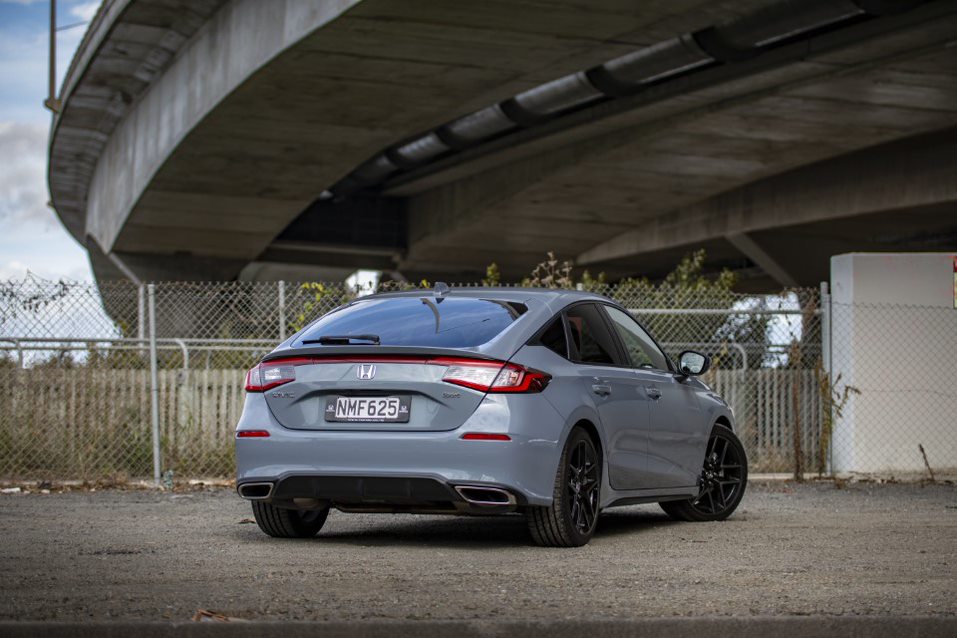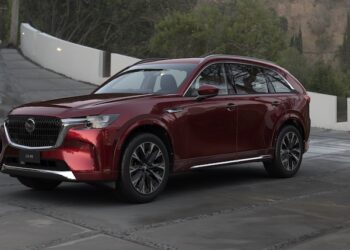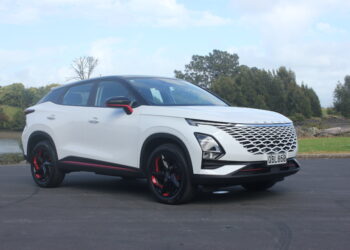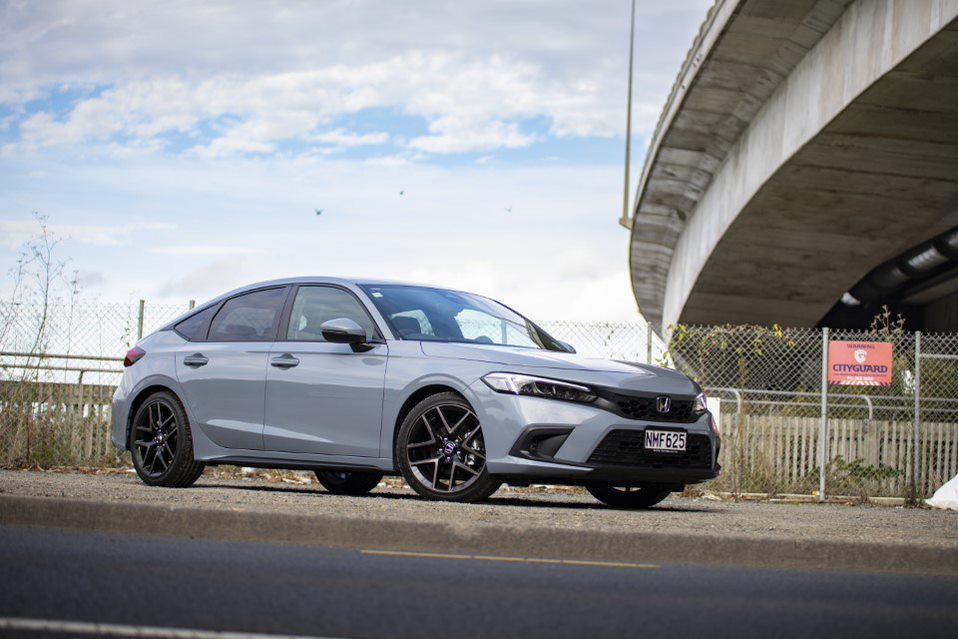
The Honda Civic has undergone quite the transformation.
For starters, it’s huge now. At 4650mm long it’s 200mm longer than the original Accord, and more than a metre longer than the original Civic of 50 years ago.
It’s also upmarket. Honda New Zealand made the brave call to sell the Civic only in its highly specified Sport designation (at least until the Type R comes, and perhaps any hybrid models).
The result is that the once humble Civic is now $47,000 plus on-road costs. Is it worth it?
THE NUMBERS
Let’s briefly try to put that number into context. Among the Civic’s traditional rivals, it’s a tough sell.
The most expensive fleet favourite Corolla hatch, the ZR Hybrid, is much cheaper at $41,990. The Toyota is cheaper than that too, since it’s eligible for a $3,882 Clean Car rebate (the Civic is rebate neutral).
The Civic is also beaten on price by the Kia Cerato, undercut by the surprisingly quick $42,990 Cerato GT warm hatch.
The Skoda Scala is another tempting alternative, with the flagship Style priced from $41,990.
Where Honda probably sees the Civic playing is among the more premium end of the segment. And there, the price begins to make sense.
It’s priced just under the $48,990 Volkswagen Golf TSI, and under the $49,590 Mazda3 Limited.
For your money you get a 1.5-litre turbocharged four-cylinder petrol motor producing 131kW/240Nm, with a CVT sending that thrust to the front wheels.
Honda quotes an economy of 6.3 litres/100km, although we saw figures around the high 8.0 l/100km mark.
INSIDE
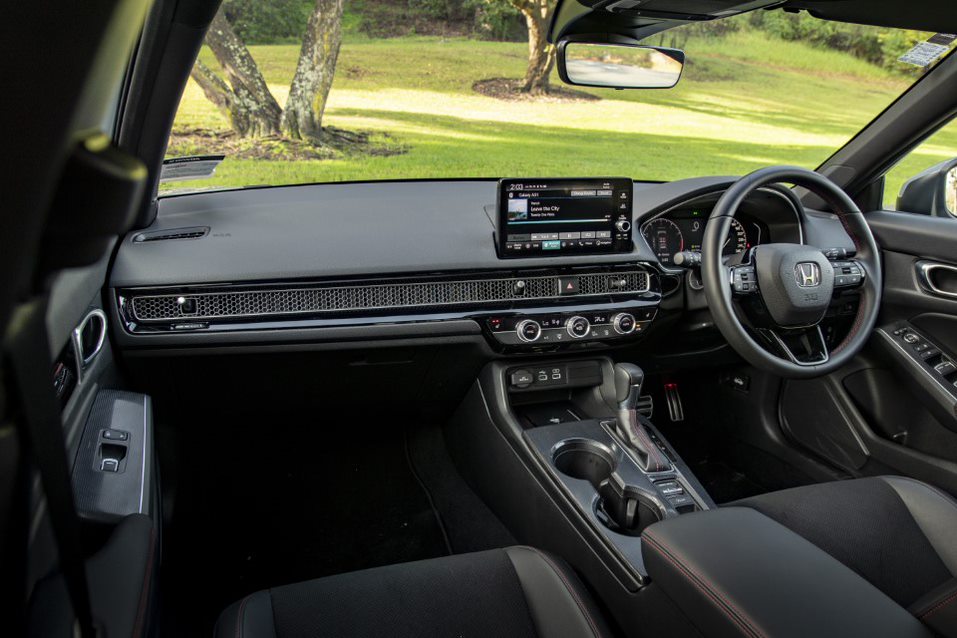
Historically, Honda interiors have been a mixed bag. Typically, they excel at packaging management, offering huge amounts of space, but in recent times they’ve felt lacking in technology.
However, the brand is in the midst of a resurgence with its next wave of updated models. The new Jazz is excellent inside, and this Civic is even better.
With its mixture of materials and finish, combined with a much[1]improved digital interface, it could be argued that the new Civic’s interior sets a new benchmark for this segment.
The switchgear feels weighted and considered, touch points are either supple or chunky metal.
Then there’s the way it looks. The bold air vent that spans the width of the dashboard is metal and does a better job than some of the premium cars it evokes in terms of making this a worthwhile place to be.
The piano black bezel underneath it is angled perfectly to reflect what’s above the windscreen without dazzling the driver.
Admittedly, the nine-inch touchscreen and the software within aren’t cutting edge but are streets ahead of what came before it and better than you’ll find in a Corolla or Golf.
Menus are presented well, resolution is high. It gets wireless Apple CarPlay and Android Auto, too, as well as a Bose sound system.
Open the big liftback and you get 404 litres of boot space, with an added 45 litres concealed under the floor. The opening is big and low, making it feel like a mini-SUV of sorts. It doesn’t eat into rear legroom, thankfully.
When designing the new Civic, Honda worked to ensure maximum space inside by minimising the amount of space taken up by the car’s mechanicals. The Civic has always been at the pointy end for things like legroom, but the latvest iteration takes this to another level.
It’s particularly true in the back. I can sit comfortably in the back seat without adjusting the driver’s seat position – a rare treat.
THE DRIVE
Speaking of the driver’s seat, it’s perfectly positioned. This is typically a sign of a car that’s built with spirited driving in mind, and that’s mostly true of the Civic.
Limited body roll, pin-sharp steering, and a wonderful sense of balance are the Civic’s key attributes when challenged on a winding backroad.
Honda has done a solid job of tuning the model’s platform, in preparation for the forthcoming Type R. The 1.5 motor is a solid character, too. Its outputs come rather close to the power and torque of the much larger 2.5-litre in the Mazda3, and thoroughly outguns the Corolla’s 90kW/142Nm.
It’s surprisingly smooth and refined for a tightly wound turbo four, delivering commendable acceleration when requested and being very quiet around town. The latter is assisted by Honda’s sound insulation.
Inevitably, the CVT takes away some of the Civic’s charm and capability. But really this is only a concern for drivers wanting to take the hatchback’s Sport nameplate to its limits.
It’s improved relative to the last Civic’s CVT, including more accurate mimicked shifting.
SAFETY
Honda has always prided itself on its Sensing safety technology suite, and it gets a boost in the new Civic. Honda has fitted it with a new camera, while improving its ability to discern lines in the road.
Lane keep assist, adaptive cruise with low-speed following, traffic jam assist, forward collision warning, road departure mitigation control, and automatic headlights are standard.
The updated Civic has yet to be tested by Euro NCAP or ANCAP. But based on its equipment list and the nameplate’s solid safety reputation, a strong rating should be expected.
OUR VIEW
The Civic’s pricing will undoubtedly turn off some people, particularly given the current lack of a hybrid powertrain. But, it makes much more sense once you step into its fabulous cockpit and sample it in person.
The Civic feels more sophisticated inside than almost all its peers, drives commendably, and has wanton amounts of room.
In a way, it feels like a more appropriate recipient for the Volkswagen Golf’s all-rounder legacy than the latest Mk8 Golf.
And compliments don’t get much better than that.
